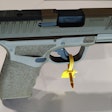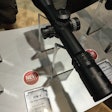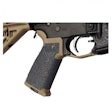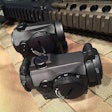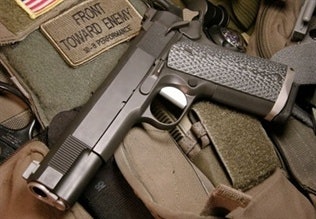 Photo: Hilton Yam.
Photo: Hilton Yam.
I carry a 1911 every day as a full-time LEO in Florida. In my duties as a firearms tactics instructor and SWAT team leader, I'm able to see what makes a 1911 succeed or fail as a service pistol.
In my off-duty time, I build custom 1911s and design high-performance parts for these pistols. I get a lot of inquiries from LEOs around the country asking how to make their personal pistol ready for duty. Let's go over a few of the issues you'll need to address.
Let's assume you've already chosen a pistol — if not, view "Choosing a 1911 For Duty Use" on my Web site for my recommended candidates. There are six main areas to cover so you can set yourself up for success.
Magazines: Don't go cheap, when choosing magazines for your duty 1911 because they'll play a large role in the success or failure of your pistol. Ditch the factory mags that came with your gun, and get some proven service-quality mags. I use and recommend Chip McCormick Power Mags; a longer treatise on mags can be found at my Web site.
Ammunition: Test fire your gun with as much hollow-point service ammunition as you can. Get at least 200 rounds of JHP (jacketed hollow-point) ammo through your gun with the new mags to make sure that all is well. If your agency uses more than one type of approved ammunition, find the one that works best in your gun.
Loctite: A little bit of judiciously applied Loctite can prevent a lot of headaches down the road. By virtue of its design, the 1911 has more components than newer designs; many of these can work loose with wear. Try some Threadlocker Blue 242 on your rear-sight set screw and grip screws, and some wicking Threadlocker Green 290 on your plunger tube, grip screw bushings, and front sight.
Watch Your Extractor: The extractor is a critical component of your 1911, and requires the user to stay on top of it for maximum reliability. Learn to be aware of the proper ejection pattern for your gun. A consistent pattern from 3 to 5 o'clock is ideal, and it should never dribble out or eject to 12 o'clock, 6 o'clock, or to the left of the gun. Any of these incidents is an early warning sign of impending extractor failure.
Watch Your Plunger Tube: The plunger tube is staked into the frame with two small posts, and this part can work loose with wear. If it does, the plunger detent can pop out underneath your thumb safety, pinning it in the "safe" position. Applying the above-mentioned Loctite 290 and buying grip panels that support the plunger tube can be a big help here. Properly designed grip panels in the G.I. pattern can keep the plunger tube in place even if the staking has come loose. This can be a life saver — literally.
Maintenance: Clean your 1911 after firing between 200 to 500 rounds, and change the recoil- and firing-pin springs every 3,000 rounds. Learn to detail strip your 1911 down to its individual components to improve your understanding of the gun. This will help you to stay on top of parts wear or breakage. Consider detail stripping at least every six months, and certainly after any excessive exposure to water, dirt, or other contaminants.
Success with a duty 1911 isn't black magic; you just need to stay on top of it. Take care of it, and it will bring you home at the end of the shift.
Hilton Yam, owner of 10-8 Performance, is a full-time law enforcement officer in Florida with extensive experience working robbery and violent fugitives. He is currently assigned to firearms training and SWAT, and carries a 1911 every day on duty.









